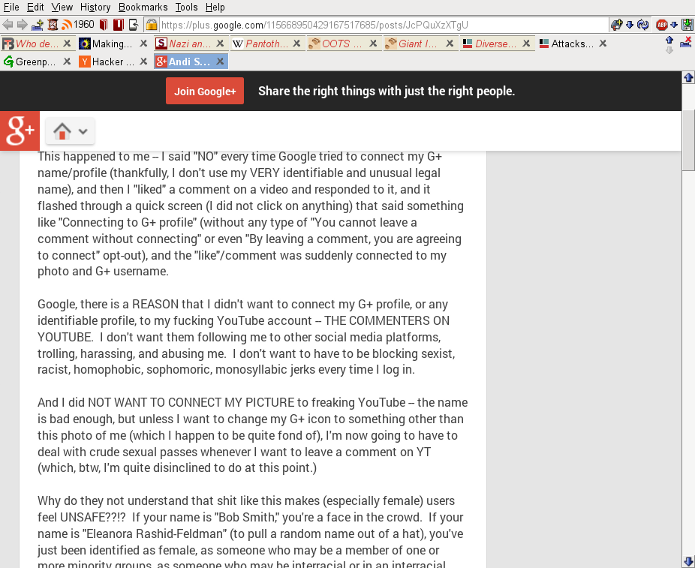The thing about sides
Dianne Feinstein, my senator, has been making waves as of late after discovering the CIA had been spying on her congressional staff. The waves are not so much on the merits of the charge, but due to the history of the person making them: Sen. Feinstein has until now been a vociferous booster for the US’s intelligence agencies, and their intelligence-gathering operations, both foreign and domestic. She was, for example, perhaps the Democrat most vocally in favor of granting the phone companies unqualified immunity for participation in bulk wiretapping of their customers. Had that immunity not halted the lawsuits back in 2008, part of the scope of the intelligence community’s bulk domestic spying would have come out in discovery long before Edward Snowden popped up on the radar, and perhaps the CIA, NSA, etc. would not have been so bold these last six years in exceeding their authority under the FISA.
So now Sen. Feinstein has gotten bit, and is indignant that it’s from the very snake she has been feeding and protecting. My surprise is that this is to Feinstein’s surprise! There’s an old saying — just because you’re on their side doesn’t mean they’re on your side. Seems my very honorable senator is rapidly becoming acquainted with the application of that proverb, somehow managing to get into the US Senate without having been!




